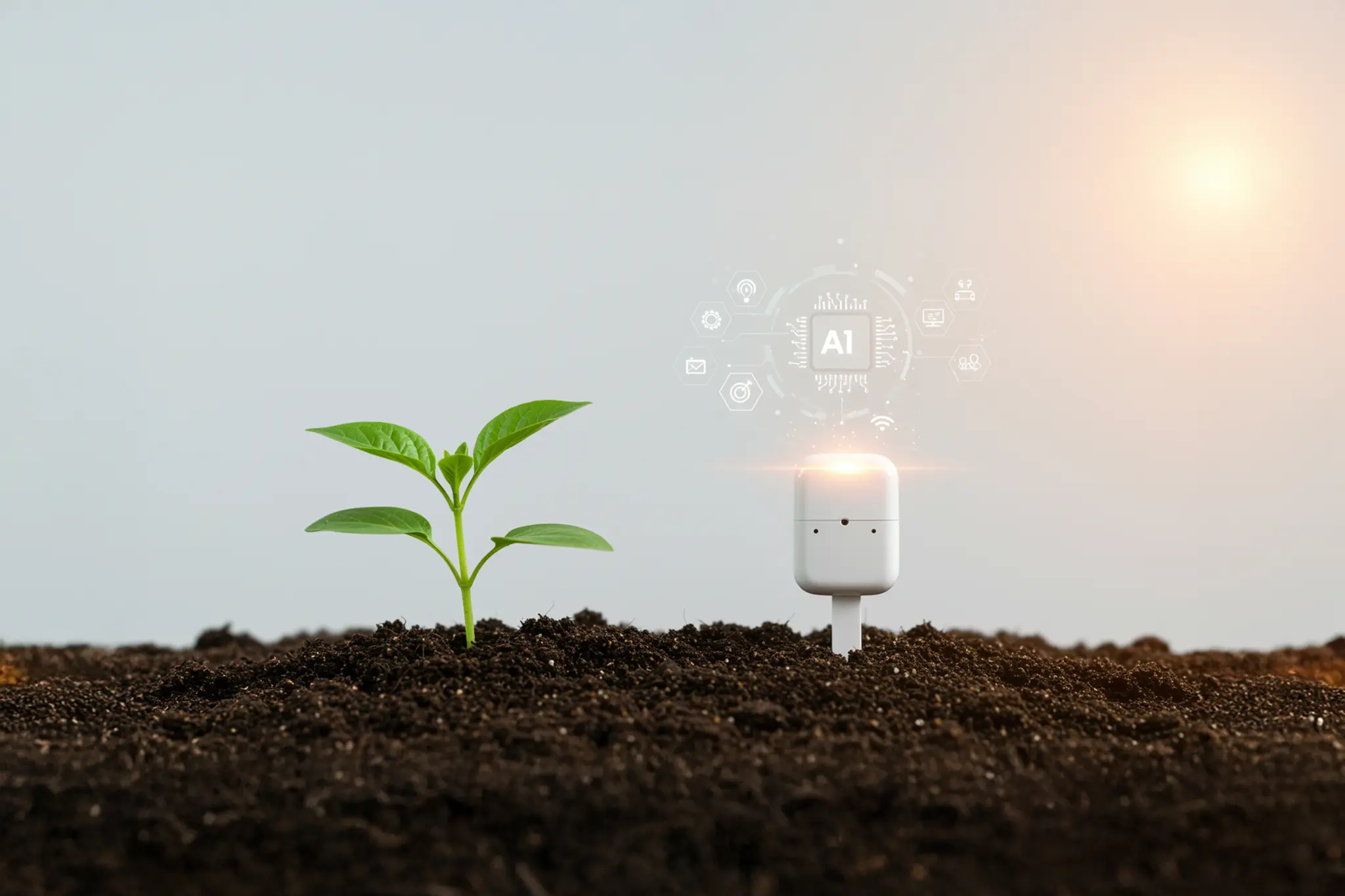By 2050, the global population is estimated to reach 9.7 billion and food demand is estimated to surge by 70%. The food industry is faced with an important question – how to produce more to meet the food demands of the fast-growing population in a sustainable way?
The answer lies in adopting intelligent technology such as automation in agriculture, Artificial Intelligence (AI), and Internet of Things (IoT) for sustainable farming. Data reveals that the farming industry realizes the significance of these solutions.
According to a MarketsandMarkets research report:
- The global digital agriculture market, currently valued at USD 18 billion, is projected to reach USD 29.8 billion by 2027.
- The market for IoT in agriculture is projected to reach USD 18.1 billion by 2026 from USD 11.4 billion, growing at a Compound Annual Growth Rate (CAGR) of 9.8% during 2021-2026.
- The market for market for AI in agriculture is projected to grow from an estimated USD 1 billion in 2021 to USD 4 billion by 2026.
Cropin research also predicts that the percentage of data that is digitized, accessible, and analyzed across the Agri-value chain will grow to 90%-95% in two years from around 55%-65% today.
While technology has made inroads into agriculture, the real challenge is in fine-tuning modern innovations to meet the changing needs of this highly diversified sector.
Critical agri-business challenges vs. intelligent agriculture cloud solution
Before delving into the applications of intelligent technology in the modern Agri-value chain, it is vital to understand the pressing challenges that make agri-businesses vulnerable to fraudulence and food safety risks:
- Lack of transparency across the value chain
- Poor supply chain management
- Inefficient pest and disease management
- Absence of efficient farmer engagement practices
- Inaccurate demand forecasting
- Demand-supply management
- Sales and marketing challenges
- Dwindling customer loyalty
Further, to understand the farm-level decisions and to augment the quality and quantity of crop yield, it is critical to deploy an intelligent cloud platform that brings together various stakeholders of the Agri-value chain. Ready availability of seed varieties, Agri-input resources, advisories for farmers, crop monitoring for pests and diseases, farmer engagement, food traceability from farm to fork, and providing trusted information to customers will all pave the way to ensuring the success of a business.
A three-pronged digital transformation approach comprising automation, AI, and IoT could serve a collective solution to the above challenges.
1. Automation in agriculture
Automation eliminates the requirement of human intervention across the entire farming process. It helps with data capturing, field scouting, and enhancing farmer engagement. Automation of sowing, watering, harvesting, early detection of pests/disease and application of Agri-input resources, combined with remote monitoring of crop health, help to increase agriculture productivity, improve financial sustainability, and mitigate food loss.
2. IoT in agriculture
Cropin Cloud powers IoT in agriculture through IoT devices and applications. Remote sensors, drones, robots, and satellite imagery help to monitor farms and engage with farmers through mobile phones and the web. Information collected from various data points is integrated with the application platforms (both mobile and web) to record accurate data on a real-time basis. IoT devices, together with connectivity, helps in geotagging farm plots, detecting weeds, setting pest and disease alerts, assessing usage of Agri-input resources, extending weather alerts, crop health monitoring using remote sensing, soil monitoring, and much more.
3. AI in agriculture
AI enables analysis of data collected through various sources and provides insights for better management and optimization of crop yield. Cropin Cloud, for example, comes with in-built 22 AI models that offers intelligence for crop detection, irrigation scheduling, yield estimation, water stress detection, pest and disease prediction, harvest date estimation, and nitrogen uptake, among others. Another example here is CSA, the AI software that helps manage cropland, livestock, fisheries, and forests to resolve the interlinked threats of food security and slow down accelerating climate change. This data is used to generate valuable insights for better decision-making that reduces production issues and supply chain inefficiencies. It also provides pest, disease, and weather alerts, and advisories to help optimize agricultural productivity.
Roadblocks to improve adoption of AI, IoT, and automation
While data around the readiness for adoption of technology in agriculture is promising, data around actual adoption of these technologies presents a new concern:
- Most seed companies have not yet deployed AI, IoT, and automation
- On average, only 14% of crop protection companies have widely adopted AI, IoT, and automation
- On average, 40% of food processing companies have not yet deployed AI, IoT, and automation
Lack of reliable digital talent and lack of awareness regarding easy-to-use solutions are among the top reasons holding back several agribusinesses from a technological upgrade. Therefore, it is imperative to embrace an intelligent agriculture cloud that makes things easier to digitize Agri-value chain.
The Cropin intelligent cloud solution is an ideal fit in this context. It is simple, secure, and scalable, and integrates seamlessly with various solutions across applications for digitization. Data collected for enhancing analytics and unified access to machine learning models enables the Agri-value chain to understand complex ecosystems, minimize risks, maximize revenue, and optimize operational costs. This enables a connected agriculture ecosystem and makes the management of every farm asset traceable, predictable, and most importantly – sustainable.
Case point:
Space4Good partnered with Cropin to develop ‘CropLens’, a prototype early warning model for pests and diseases in transplanted rice paddy. The partnership leveraged Cropin platform for IoT sensors, automation, remote sensing and Geographic Information Systems, and AI applications. Through a random sampling method, 500 farmers in each season (Kharif and Rabi) were selected from Andhra Pradesh. The spatial hotspot maps of CropLens provided insights on distribution and severity of predicted pest and disease infestation.
This enabled farmers to track crop health, visualize crop risk, and gain extended insights and advisories on managing pest infestations and diseases. The project increased productivity by 20% and reduced fungicide expenses by 15%. This model can be improvised for multiple crop types and agricultural landscapes to improve risk management.
Supercharge digitalization with intelligent agriculture cloud
Digitalization in agriculture will enable agri-businesses to ensure end-to-end traceability and provide real-time intelligence and insights for better predictability. Cropin’s several deep learning models are designed to solve problems and address major challenges in the Agri-value chain. The platform is easy to use and integrates into existing systems to empower agribusinesses at all levels.
Looking to further explore Cropin’s capabilities for your agribusiness? Get in touch with us today!








